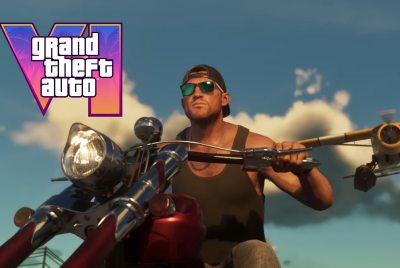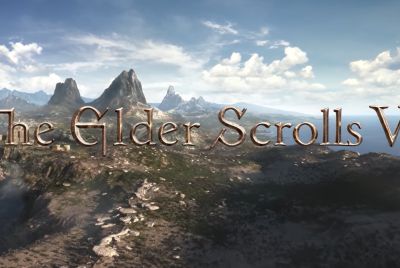Outlast Review
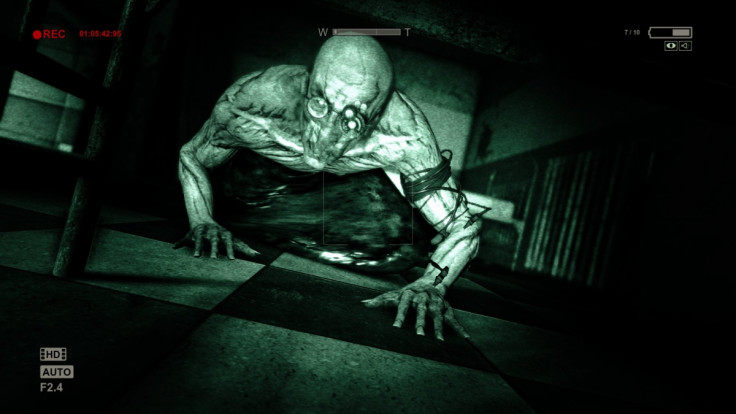
- Developer – Red Barrels
- Publisher – Red Barrels
- Platforms – PS4 (also available on PC)
- Price – £10 (free in February to PSN subscribers)
- Release date – February 5
Outlast Review
Outlast's problems are rooted in a particular genre of horror game that has emerged in the past five years. Amnesia is a popular example, also Slender – games in which you can't attack or hurt enemies and instead have to run and hide from them.
Initially this seems like a fantastic mechanic for a horror game. In a medium (videogames) where audiences are so used to feeling powerful, what could be more frightening than taking power away from them? Strip videogame players of weapons and surely they're going to feel disorientated.
But in fact, what happens is the opposite. Heading into Outlast – or Amnesia or Slender – with the knowledge that you'll never have to fight an enemy is, in a different way, empowering. The fear experienced in good horror games is not a fear of being unable to fight back, it's a fear of knowing that at some point, you will have to fight back and that when you do, you'll be at an extreme disadvantage.
Burden of Responsibility
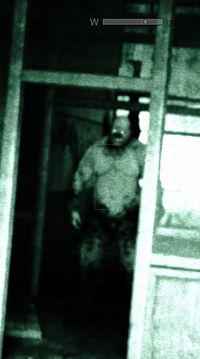
Silent Hill and the early Resident Evil games understand this balance. Combat with the monsters is a fundamental part of the game but you're only given limited ammunition and ineffectual melee weapons. Your characters are weak and difficult to control. Confronting monsters feels like an ordeal.
Outlast on the other hand spares you the burden of responsibility. When you know that all you have to do is run away and hide, the enemies are less threatening. In horror games with combat, encounters with enemies may force you to use all your ammo, leaving you even more vulnerable in the next fight and potentially making further progress impossible.
In Outlast, and other games like it, the worst enemies can do is send you back to the last checkpoint.
Gameplay inevitably devolves into a game of bulldog.
Gameplay inevitably devolves into a game of bulldog. With such regular save points and no resources at stake, rather than struggle for survival, you end up merely dashing towards objectives. Sometimes you get killed and have to try again. Other times, you're able to run from your enemy, go hide in a locker for a moment and then come out and take another run.
A total crap shoot
Your adversaries forget that you were ever there. They simply return to their patrol routes and wait for you to either sneak by or alert them again, thus repeating the process of running and hiding. It ends up a total crap shoot. Sometimes you make it, sometimes you don't. Either way, you don't really care.
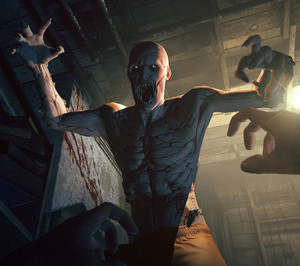
These problems, all of which are connected to genre, would perhaps be compensated by a decent story, but Outlast's narrative is humdrum.
You play a journalist who on a stormy night breaks into a remote psychiatric hospital. It's a child protagonist away from R.L. Stine. Despite some properly gory moments, Outlast's story never manages to thrill. As soon as you find a document hinting at a secret government project you can pretty much guess the rest.
It lazy and over-enthusiastic at the same time. Everywhere you go there is blood up the walls or a body on the floor. Jump scares are commonplace – you'll be walking down a corridor and without prompt a crazy man will spring round the corner and scream in your face. It's like a ghost train. The writers of Outlast trowel it on without any consideration for pace or placement.
"Alcoholic kiddy-fiddler"
There's one line of dialogue that deserves special mention. Very early in the game, you're attacked by a mental patient who's dressed himself as a priest. Afterward, your character notes in his journal that the guy "looks like an alcoholic kiddy-fiddler." This sums up precisely where Outlast goes wrong. It tries so, so, so hard to be shocking and in the process becomes laughable.
It tries so, so, so hard to be shocking and in the process becomes laughable.
But it has some terrific environments, not necessarily beautiful or detailed, but just interesting to navigate and be in. There's a pervasive sense of being lost. You spend so much of Outlast crawling around in the dark, only able to fathom a metre or so in front of you. The best parts of the game are when there are no enemies and you're simply finding your way around. It's like being in like Die Hard. You're crawling in vents, falling through floors, climbing through windows.

It's tactile. If you look down, you can see your body. If you crawl along the floor, you can see your hands reaching out and feeling the ground. Despite the fantastical amounts of blood on the walls, the asylum feels genuine. It's not just the small things, like the way your camera shakes when you run, but the attention to architectural detail.
Feels like something special
The world of Outlast fits together. It feels like a building. There's an excellent section where you're clawing along the walls of a sewer in pitch darkness. You can practically smell the water around your waist. When the battery in your camcorder finally blinks off, and you're left feeling along the tunnel waiting to glimpse some light, that's when Outlast feels like something special.
There's some magnificent imagery as well. Sometimes, when using the night-vision lens, you catch a reflective flicker at the end of a corridor. You stop, crouch, zoom in and there's the face of an enemy, staring straight you. It's pictures like these – the faces and features that you glimpse in the faded green of your NV filter – that will stay in your mind after you finish Outlast.
Conclusion
Because of that, it is a better game than Amnesia or Slender. It falls into the genre trappings of run-and-hide horror but Outlast has such dedication to – pardon the cliché – atmosphere that you can't help but feel drawn into it.
Unlike those other games which feel like experiments - like newisms that attempt to slip by on their novel mechanic alone – Outlast has substance. Hopefully the next "horror game without weapons" will improve on this formula even more.
Scores:
- Gameplay: 7/10 – It isn't scary and it often degenerates into a farcical game of hide and seek, but there are moments, particularly when it's just you and the camera, that really shine.
- Graphics: 9/10 – Particularly for an independent studio, Outlast is a tremendous looking game. The found-footage/night-vision aesthetic might be derivative of popular horror movies but when it's you controlling the camera, it has an energy that you won't have before experienced.
- Writing: 3/10 – Several reheated horror clichés are explored via laughable dialogue. The eventual reveal of what's been going on is completely ruined.
- Sound: 5/10 – Outlast is a well-acted game, certainly, but the score kills a lot of the scare scenes. Non-diegetic music doesn't at all fit a found-footage visual design. This would have been so much better if there weren't any music, but you don't even have an option to turn it off.
- Replay value: 7/10 – You'll certainly be tempted to play Outlast over and over. It's a neat, contained game, something you can sit and play with friends instead of watching a horror DVD.
- Overall: 7/10 – Despite an absence of genuine scares and inheriting a lot of shortcomings Amnesia, Outlast is an engrossing, visually exciting game, impressively put together by such a small team.
Want to know what our review scores mean? Have a look at how we review games.
© Copyright IBTimes 2025. All rights reserved.






